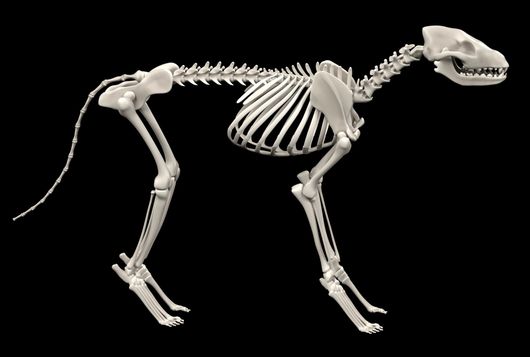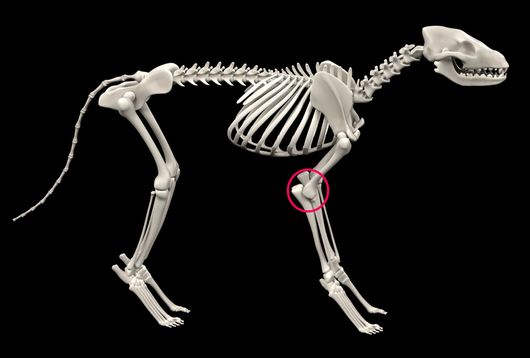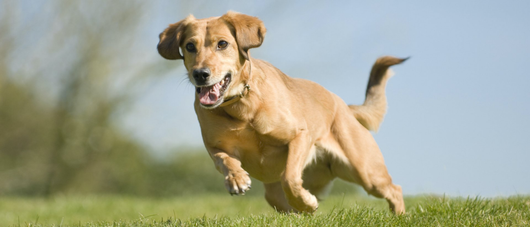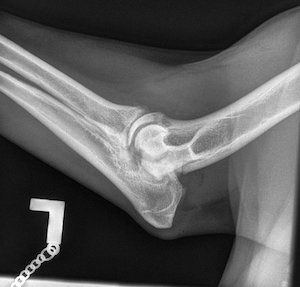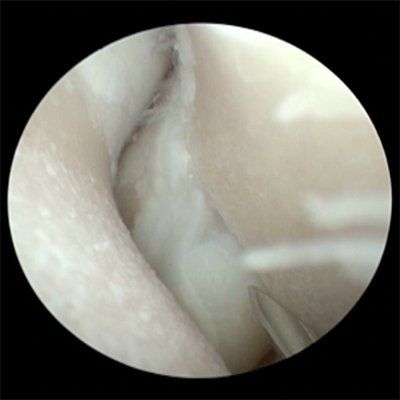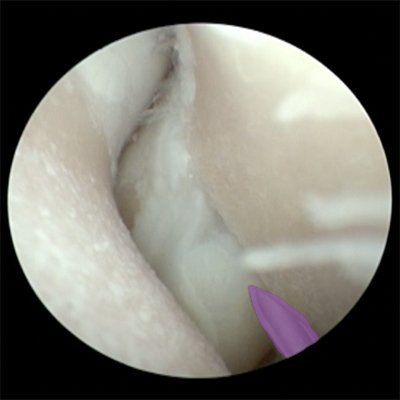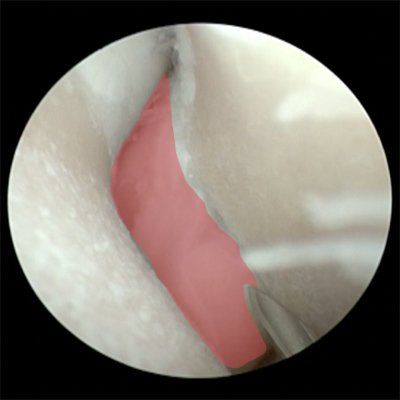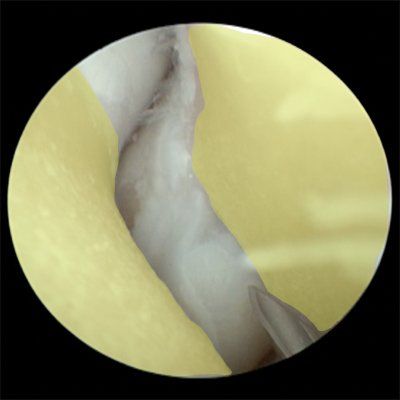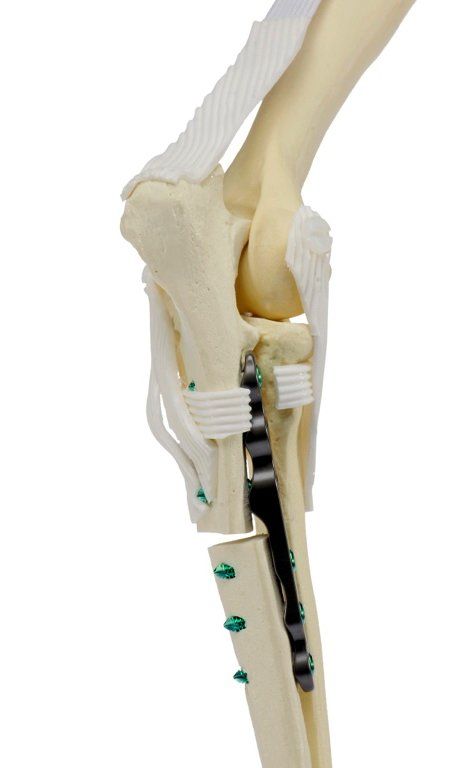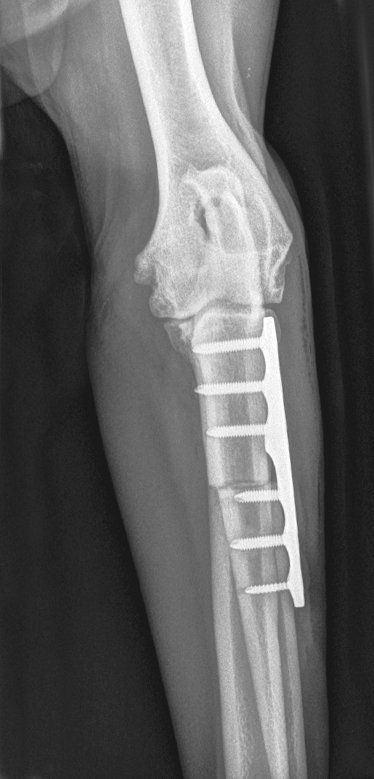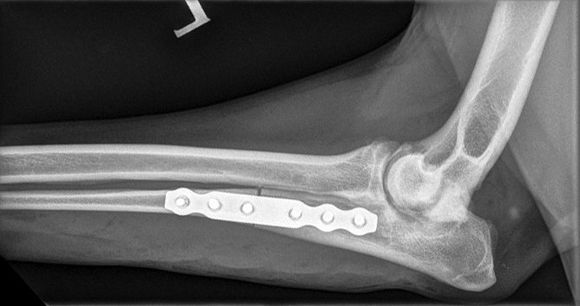When the hinges don't bend.......
We often describe this issue as 'Elbow Dysplasia', and it can be linked to hip dysplasia.
Elbow dysplasia covers a number of abnormalities that develop in the elbow :
Fragmentation of the medial coronoid process MCFP
Osteochondritis dissecans (OCD) of the
medial portion of the humeral condyle
United anconeal process (UAP)
Elbow Incongruity
The picture on the right shows the elbow anatomy, and then from a small camera in the joint.
The pictures to the left are taken through a small camera placed into the joint, just under 3mm wide.
A small injection needle is shown in purple to give an idea of size.
The troublesome fragment is shown in red.
The yellow shows the area around the fragment where the smooth cartilage has been rubbed away.
Just like Hip Dysplasia, this is a situation where a number of bones must grow in coordinated fashion so that the jigsaw fits together.
Any tiny abnormality results in a situation whereby a small fragment will rub on other parts of the jigsaw. It is very much like having a tiny piece of grit in your shoe. The discomfort is completely disproportionate to the size of the grit as you can see from the pictures above.
Like hip dysplasia, this condition is carried in the genes, and often shows up as lameness when the dog reaches 5-6 months of age. Whereas dogs with hip dysplasia are relatively easy to diagnose, some of the conditions that develop with elbow dysplasia are very hard to see on x-ray.
We are a little limited in genuine options to deal with this problem. Removal of the fragment definitely improves the comfort of these patients, but in the longer term we know that the arthritic process continues regardless so our surgical options are not great.
A few options involve changing the shape of the ulna and changing the weight distributed through the joint.
One such option is PAUL developed by a company called Kyon
who work hard to produce solutions for us.
We can only utilise this technique in younger dogs so by the time they have severe arthritis, many of them have passed the point at which we can intervene, generally up to 2 years of age, occasionally perhaps older.
Currently, elbow replacement doesn't work reliably without severe potential complications, but work is always on going to improve them.
The elbow as a jigsaw....
The pictures on the right are from a dog that damaged its radius as a puppy. The result was that the ulna failed to grow properly so our 3 part, 3D jigsaw didn't grow in synchrony, and ended up out of shape.
The green ring is the end of the elbow, and should match the red curve in the ulna. They didn't match so failed to move together properly. This then causes abnormal wear & tear, and then discomfort.
In this young dog, we could cut the ulna, and then allow it to move to the correct place.
The immediate movement post surgery was really good, and then as recovery progressed, the two sides of the joints, and the three bones that make up the jigsaw moved to a more normal location.
Many of the issues in the elbow result from this mismatch in growth.

